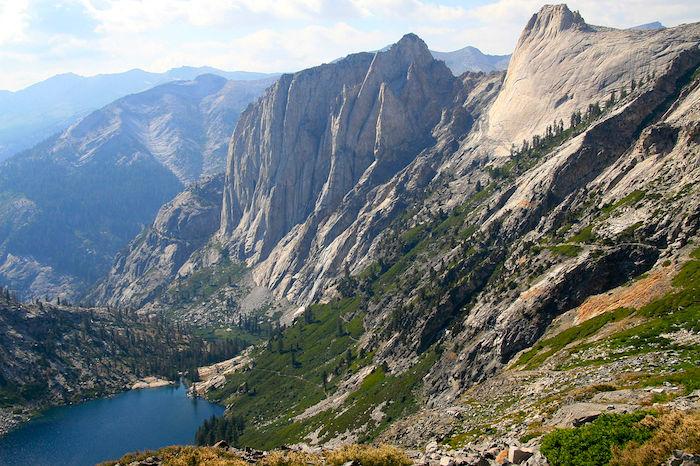
The High Sierra Trail has switchbacks above Hamilton Lake. It passes over the Great Western Divide at Kaweah Gap, climbing some 5,000 feet (1,500 m) in 3 miles (5 km)/Jane S. Richardson via Wikipedia
For many, there can be nothing quite as sublime as hoisting a pack on the back and disappearing for a handful of days, at least, into the backcountry of a national park. It's a trip built on excitement and expectation, one of many similar excursions to make in a lifetime.
It's not one you don't expect to return from.
Through the decades, I've been fortunate enough to hoist that pack, or stow gear into a canoe or whitewater raft, to explore the backcountry with friends and family. They've been trips brimming with gorgeous scenery, camaraderie, solitude at times, and rejuvenation always. And from the minute I've returned home, the planning of the next trek begins in the smallest of measures: deciding where to go.
This past week a 26-year-old man from Tustin, California, was enjoying the backcountry of Sequoia National Park on the High Sierra Trail, no doubt relishing his good fortune to be sharing the wilderness with a good friend. His fortune, though, did not hold.
Friday evening, shortly after 6 p.m., his friend arrived at the Lodgepole Visitor Center, anxious to find help for his buddy, who was suffering abdominal pains. Two rangers, a paramedic and an Emergency Medical Technician, quickly set out on the trail into the high country, covering the six miles from Giant Forest to the High Sierra Trail location of the stricken young man in a handful of hours.
It was too far to travel in too little time. When they reached the backpacker, about 11:30 p.m. that night, the 26-year-old already had passed away. The cause of death is under investigation.
Not quite two weeks ago there was another backcountry death in Sequoia. In that incident, a 53-year-old man, tired and obviously thirsty, died in a fall down a roughly 300-foot waterfall along Panther Creek. He had stopped near the top of the waterfall to fill his water bottles; other backpackers passing through the area spotted two bottle lids at the top. Rangers found the man's body at the base of the waterfall.
These are tough outcomes to comprehend. Those who head into the backcountry, whether for a day or a season, step away from the daily rigors of life to relish the forests and mountains, lakes and streams, to marvel in the natural world. We struggle to understand such conclusions to outings that started no doubt in heady anticipation.
It's no doubt little consolation to family and friends, for the fact these two men had gone into Sequoia but not returned makes no sense, but they had traveled into the wilderness for one of the best times of their lives.
You don't get to choose how you're going to die. Or when. You can only decide how you're going to live. Now. -- Joan Baez.



Comments
Thanks for the nice reflection, Kurt.
An apt and accurate article. Venturing into the wild - whether for adventure, recreation or sport - necessarily entails risk, up to and including death. After years of one-, two- and three-week backpack trips into the Grand Canyon, life circumstances compelled me to make a more protracted experience in that canyon I loved so much. So I planned and packed for a two-month trek, and decided I wanted to go solo. I survived - in fact was thrilled for - this experience of a lifetime, even as I knew I was dancing with dangers both known and unknown. The wild IS dangerous; if it weren't, it wouldn't be wild. And if it isn't wild, what's the challenge? Accepting those risks enriches the lives of those willing to be learn and be amazed.